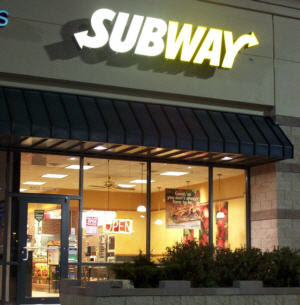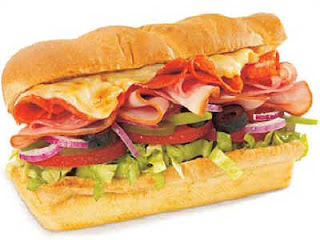Consumers are increasingly aware and inclined towards green products and organizational policies behind it. Let us think of Toothpaste which is primarily a herbal gel toothpaste free from Fluoride, Sodium Lauryl Sulphate, Artificial Colours, Artificial Preservatives and Animal by-products.
This calls for a control on the list of environmentally hazardous raw materials through Green Procurement Policies. A provision for environmental substitution by tree planting and subsequent maintenance can be initiated. Also, Suppliers would be forced to have ISO 14001 certification. The product such manufactured in an efficient plant would be GREEN SEAL certified product.
The most important part of the Green Product Cycle is the Waste Management policy. The residue can be utilised as a raw material for manufacturing of PET tiles and sheets, tables, chairs and other office furniture. This in turn would increase revenues for the organisation and a reputation as a green initiative company.
To implement the effective Reverse logistics and material procurement, rag-pickers and waste collection centres and depots are targeted. The materials collected by rag-pickers will be collected centrally on weekly basis. The aggregated mass of empty tube material can be recycled in a bulk. This entire process will also include awareness drive for the rag-pickers by their contractors.
The financial implication for the entire drive turns out to be a profitable endeavour for the company. The incremental costs are incurred in making the entire supply chain green in formations of supplier relationships, facility planning, certifications, marketing and promotional activities and reverse logistics etc. These costs are recovered through premium pricing, reduction in raw material costs and revenue increment by re-use in other industries.
Currently the market size of toothpastes is is Rs. 3000 Crores. The expected market growth rate is 3 percent CAGR for 2009-12. If the entire oral care market segment is considered, it is 60% for Toothpaste, 23% for Toothpowder and remaining 17% for Tooth Brush. So clearly the focus is at the Toothpaste segment.
Product strategy & Lifecycle Management
A toothpaste has to be free from fluoride, sodium lauryl sulphate, artificial colours, artificial preservatives and animal by-products. Hydrated silica is used as the abrasive agent and can be flavoured by natural indigenous herbs such as Lavang, Choti ilaychi, Saunf, Neem, Babool & Khadir. It also contains oils such as oils of coriander, ginger, lemon, and spearmint. Other common ingredients for whitening and binding are used as usual.
Packaging Aspects:
A Multilayered co-extrusion Post consumer recycled resin (PCR) can be used. Here the Value proposition lies in providing an alternative eco-friendly and sustainable solution to the existing process by using the concept of “REUSE & RECYCLE” instead of the conventional approach of land filling which is not sustainable solution for the long term.
Operations Strategy:
The operations strategy revolves around the green-ness of the entire supply chain. Following are the parameters of green supply chain & its implications –
1. Green procurement practices:
- Establishment of a control list of environmentally hazardous substances will be made. The toothpaste is free from fluoride, sodium lauryl sulphate, artificial colours, artificial preservatives and animal by-products, hence the raw materials are so picked up that they are environmentally safe.
- The procurement of toothpaste ingredients will be based on the green procurement practices involving recyclable/recycled and reusable yet trusted resources.
- Natural Raw material extraction will be replaced by similar trees on the barren land and maintenance of the same.
2. Assessment for the environmental management of suppliers:
- The raw materials suppliers will be asked to have ISO 14001 certification. And also a strict collaborative control on the supplier practices can be implemented.
3. Green product approval:
- The toothpaste will be accredited by a green certification such as Green Seal or Green Mark Energy label which is recognized internationally.(Taiwan and USA)
4. An auditing mechanism for green management:
- The organisation will be continuously audited for clean energy mechanism and green management.
5. Green manufacturing practices:
- Manufacturing practices to be conducted with higher efficiency and percolation of the fundamentals of green technology amongst the bottom most human resource. As new machinery will be implemented, the processes might be more efficient than before.
6. Green design:
- The design of the tube will be so that the recycling will be easier and it would yield about 80% of the material to the re-usable form.
7. Recovery and reuse of used products:
- The reverse logistics will be managed through a network of rag-pickers and the rag-picking centres.
- Used tubes of the toothpastes would be collected back by the rag pickers. This recovery method will be yeild the highest recovery.
8. Green products standards:
- The product will be GREEN SEAL certified and awareness about the same in the consumer markets would be pushed for.
- A green index rating for green products can be done.
Waste Management Process/Reverse Supply Chain Aspects:
Instead of the using ABL material (Aluminium barrier layer), an eco-friendly solution using a plastic material which is capable of being recycled can be used. Currently the process of waste management involves disposing the empty tubes by land filling process or incineration to get rid of the material.
Recycling toothpaste tubes helps to a greater extent in the reduction of air pollution and tries to achieve sustainable development:
- It keeps usable materials out of the landfill.
- It provides resources to the post-consumer manufacturing industry, and requires fewer virgin resources for the creation of new products.
- It saves energy and water since creating products from recycled materials is less resource-intensive.
About 0.9 billion toothpaste tubes are sent to landfills every year, many of which are recyclable. Toothpaste tubes are generally made with aluminium or plastic. Recycling aluminium instead of mining and processing virgin ore results in energy savings of up to 95 percent. The process of converting raw bauxite (the source of aluminium that makes up 8 percent of the earth's crust) into aluminium is an energy-consuming one, requiring roughly 7.5 kilowatt hours for each pound of virgin aluminium. In addition, reusing aluminium means that less bauxite needs to be procured to create new materials: open-cast mining of bauxite leads to deforestation and destruction of ecosystems.
Plastic is not biodegradable, taking up to 700 years before beginning to decompose. Recycling plastics keeps this non-biodegradable waste out of landfills and can reduce energy consumption by 70 percent. Recycling paper products, like cardboard packaging, results in energy savings of 40 percent.
Another Way to get rid of the material is as follows -
· To utilize the residue as raw material for manufacture of PET tiles and sheets, tables, chairs and other office furniture.
· The program is now diverting over 1.5 metric tons annually of Shines toothpaste tube packaging volume. The process is an example of sustainability, as well as creating new products; it allows savings in raw material and stimulates job creation.
· To promote recycling in integrated waste management.
Reverse logistics & Material procurement strategy:
Waste Management Process Cycle:
1) The empty tube collection process for further recycling process can be done with the help of rag-pickers who will collect the empty tubes from various points of the city. The waste picking outlets at various centres will be a source of empty tube collection provided by the rag-pickers.
2) Further our ECO-VAN’s will be collecting these empty tubes from the pick-up centres on a weekly basis and later sending it to the manufacturing plant for the recycling of the tubes and converting it into end utility products.
3) The rag-pickers will be accordingly rewarded by providing monetary incentives.
Special Awareness drive for the rag-picker community:
1) A special initiative in the form of full fledged programme will be organised in the initial phase in-order to educate the rag-pickers in identifying the tubes along with the other products as a part of the extended plans for other products in the product line. They will be given a comprehensive training to be followed.
The methodology of building a Green Reverse Supply chain is thus explained considering all the stakeholder’s and the systems in the process.



 The transport operations are based on – Load factor, quality of the service, security in the service.
The transport operations are based on – Load factor, quality of the service, security in the service.